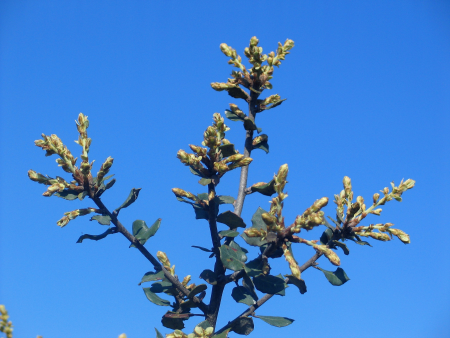
Objective:
- Evaluation of spring shoot phenology (timing of budburst) variation as a function of seed geographic origin.
- Understanding the adaptation potential of cork oak populations to biotic stress, assessing if earlier/later budburst timings have consequences on the amount of leaf pest damages.
- Identify the most frequent pests occurring on the damaged leaves. Relate budburst and plant–pest interactions with climatic conditions.
Context:
Climate change-induced warming has led to shifts in spring phenology in many plant species. These shifts have ecological consequences since they affect (i) the length of the growing season and the amount of net assimilation, affecting tree growth potential, and (ii) the defoliation patterns with significant disturbance in tree fitness.
The Portuguese cork oak provenance trials, growing in common conditions 35 populations covering the species distribution area, were used to evaluate adaptive traits (budburst and leaf pest damage) linked with the climate that affect plant performance.
Contacts:
Teresa Sampaio, tsampaio@isa.ulisboa.pt
Maria Helena Almeida, nica@isa.ulisboa.pt
Further information:
Sampaio, T., Branco, M., Guichoux, E., Petit, R.J, Pereira, J.S., Varela, M.C, Almeida, M.H., 2016. Does the geography of cork oak origin influence budburst and leaf pest damage? Forest Ecol. Manage. 373, 33–43. https://doi.org/10.1016/j.foreco.2016.04.019